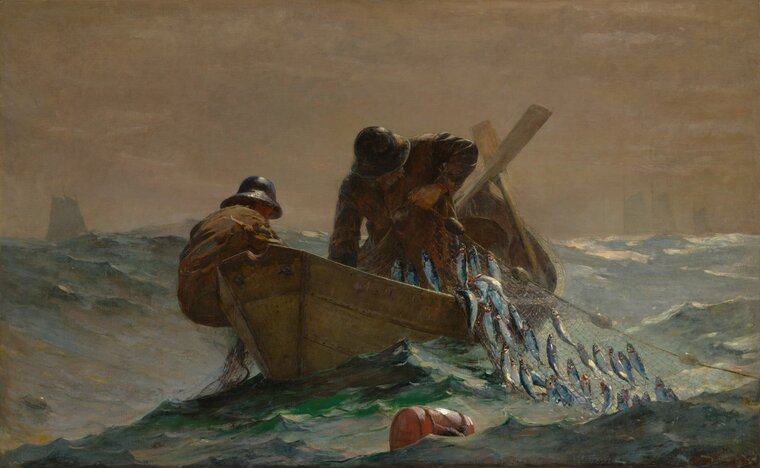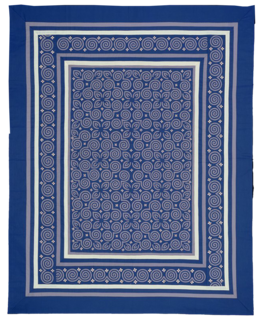
In 1883 Winslow Homer moved to the small coastal village of Prouts Neck, Maine, where he created a series of paintings of the sea unparalleled in American art. Long inspired by the subject, Homer had spent summers visiting New England fishing villages during the 1870s, and in 1881–82 he made a trip to a fishing community in Cullercoats, England, that fundamentally changed his work and his life. The paintings he created after 1882 focus almost exclusively on humankind’s age-old contest with nature. Here Homer depicted the heroic efforts of fishermen at their daily work, hauling in an abundant catch of herring. In a small dory, two figures loom large against the mist on the horizon, through which the sails of the mother schooners are dimly visible. While one fisherman hauls in the netted and glistening herring, the other unloads the catch. Utilizing the teamwork so necessary for survival, both strive to steady the precarious boat as it rides the incoming swells. Homer’s isolation of these two figures underscores the monumentality of their task: the elemental struggle against a sea that both nurtures and deprives.




